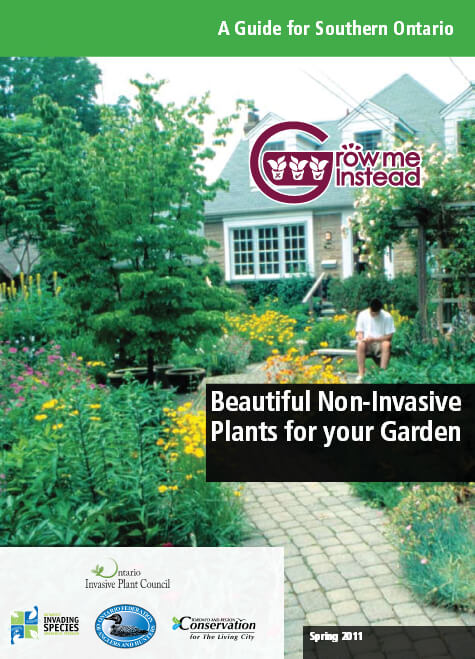April 15, 2014
Province introduces Invasive Species Act
The Ontario government has begun the process to adopt an Invasive Species Act.
The proposed legislation, which was introduced in the provincial legislature on Feb. 26, would give Ontario the power to ban activities such as possessing and transporting certain high-risk invasive species, and enable rapid response actions to address urgent threats.
Addressing the legislature to introduce the bill, Minister of Natural Resources David Orazietti said, “The proposed Invasive Species Act would provide a strong legislative framework to better prevent, detect, rapidly respond to, and eradicate invasive species in the province. It would help by providing the powers to intervene earlier, so invasive species don’t become established and lead to significant social, environmental and economic costs for Ontarians.”
Dr. Jeanine West represents Landscape Ontario on the Ontario Invasive Plant Council (OIPC). OIPC is a non-profit, multi-agency organization, founded in April 2007 to help coordinate provincial response to the growing threat of invasive plants.
“In September 2013, our industry responded to the Ministry of Natural Resource’s discussion paper on invasive species, presenting our concerns regarding the impact of this legislation on nursery growers, the extent of powers requested by MNR, and the challenges associated with an ‘allowable’ species list. At the same time, our industry members recognized the seriousness of invasive species and asked to be part of stakeholder discussions to promote a risk-based, integrated approach to invasive species management,” stated Dr. West.
The proposed legislation, which was introduced in the provincial legislature on Feb. 26, would give Ontario the power to ban activities such as possessing and transporting certain high-risk invasive species, and enable rapid response actions to address urgent threats.
Addressing the legislature to introduce the bill, Minister of Natural Resources David Orazietti said, “The proposed Invasive Species Act would provide a strong legislative framework to better prevent, detect, rapidly respond to, and eradicate invasive species in the province. It would help by providing the powers to intervene earlier, so invasive species don’t become established and lead to significant social, environmental and economic costs for Ontarians.”
Dr. Jeanine West represents Landscape Ontario on the Ontario Invasive Plant Council (OIPC). OIPC is a non-profit, multi-agency organization, founded in April 2007 to help coordinate provincial response to the growing threat of invasive plants.
“In September 2013, our industry responded to the Ministry of Natural Resource’s discussion paper on invasive species, presenting our concerns regarding the impact of this legislation on nursery growers, the extent of powers requested by MNR, and the challenges associated with an ‘allowable’ species list. At the same time, our industry members recognized the seriousness of invasive species and asked to be part of stakeholder discussions to promote a risk-based, integrated approach to invasive species management,” stated Dr. West.
Ontario Invasive Plant Council (OIPC) and partners created a guide in 2011 to help gardeners and landscapers choose ‘non-invasive plants.’ The Grow Me Instead guide identifies common garden plants that may invade natural areas, thereby reducing native biodiversity and changing environmental conditions.
Not everyone agreed with some of the plants under the heading Invasive Plants. Some of the plants contained in the list are periwinkle, Japanese honeysuckle, miscanthus, English ivy and more. View the Guide here.
If the proposed legislation is passed, Ontario will be the first jurisdiction in Canada that has stand-alone invasive species legislation.
It is estimated that there are over a thousand non-native species are spreading throughout Ontario. Currently the Fish and Wildlife Conservation Act and the Ontario Fishery Regulations, 2007 uses an allowed species approach for bait and aquaculture. Some hope that this approach might be appropriate under the proposed invasive species act.
Dr. Jeanine West notes that the Invasive Species Act is now open for public comment. She is asking for comment from industry members “so your voice can be heard.” Forward your comments to Dr. Jeanine West jwest@phytoserv.com, 705-796-8812.
The Landscape Ontario’s representative on the Ontario Invasive Plant Council, says she will be responding to the minister on the nursery sector’s behalf.
